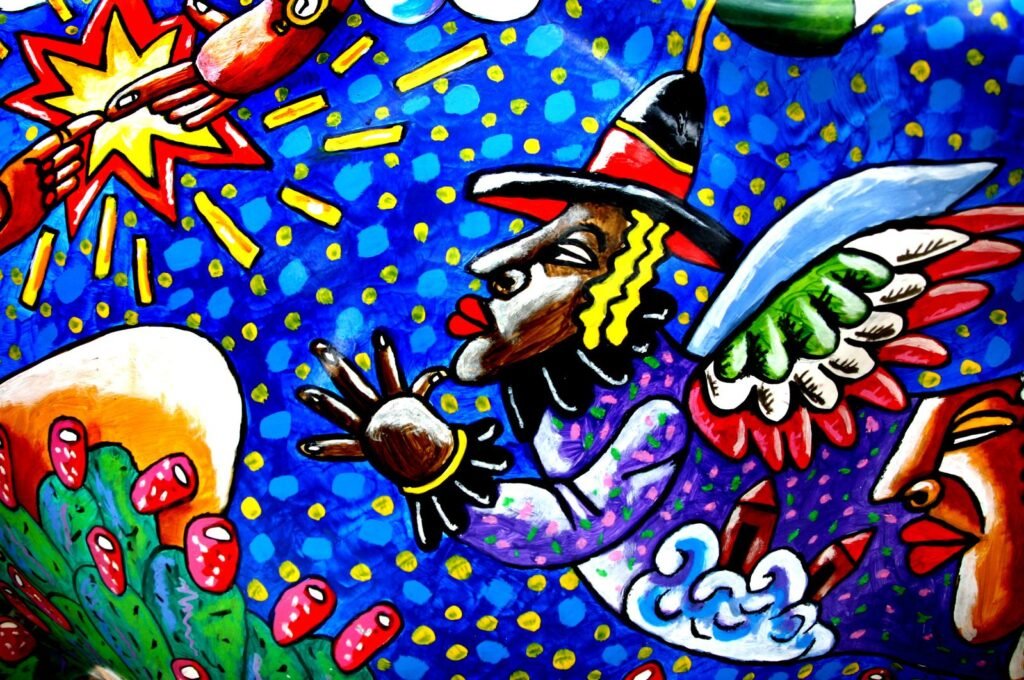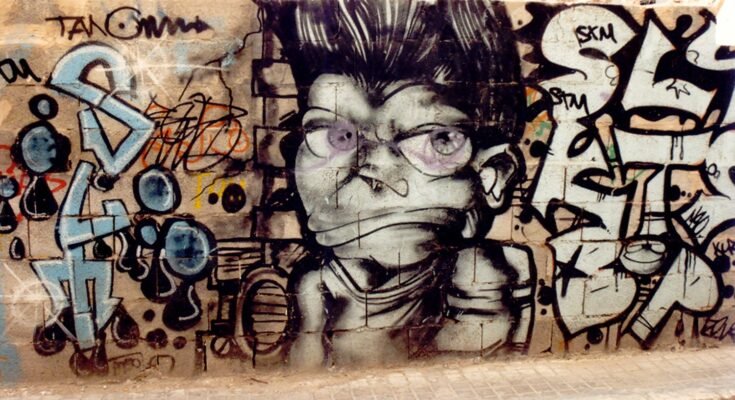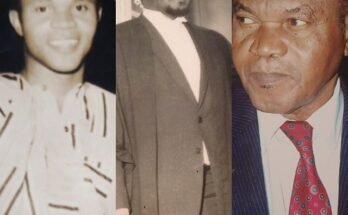It was as though an unknown academic had us in mind when he talked about the”usefulness of useless knowledge.” In spite of our youthfulnes and naivety we made deliberate efforts not to draw lines among various compartments of ‘knowledge acquisition.’ We embraced anything that would enrich our knowledge and enliven our mood in an atmosphere that was prone to spells of unpredictability, if not uncertainty. One of the spring boards of ‘informal education’ that so much appealed to us, albeit unconsciously, was the galaxy of graffiti that adorned the walls of classsrooms like mural paintings. Such an outlandish display of an ‘illegal form of visual communication,’ on the ‘sacred’ walls of the prestigious Government Secondary School, Owerri, surprisingly, did not attract the scrutiny of the school authority or if it did, the authorities opted to turn a blind eye.
Purists tend to overdramatize the protocols that are enshrined in the four walls of secondary schools by insisting that gazetted syllabus, which epitomised formal education, was supreme to other less fancied elements of ‘informal education,’ which they, erroneously claim, were the exclusive preserve of run -off -the- mill schools in the fringe parts of the federation.
Our generation-the class 1979-84, never respected the yearnings of the purveyors of that inflexible dogma which only accommodated formalized recreation and fossilized literary debates, as the overarching strides of ‘informal education’. We, wittingly or unwittingly, explored other frontiers that were not embedded in the straitjacketed apparatus of formality. Charting new courses and seeking unorthodox avenues to express our innate talents seemed to have paid off, as they made us well rounded students, which underscored the original concept of the avowal: ‘you have to pass through the school and allow the school to also pass through you’. For a while, we deliberately shelved the great literary classic works of Shakespeare, Chaucer, Dickens, George Eliot and George Orwell, and wholeheartedly embraced breezy works of fiction that animated our consciousness.
Yes! it was a stop-gap intellectual adventure, but it was a richly rewarding exercise. Devouring these ‘roadside literature’ compelled us to learn new and thrilling ‘sentences’ that were, admittedly ‘unconventional.’ It fired our desire to ‘lift’ engaging ‘quotable quotes’ for our new found obsession with the esoteric art of graffiti.
We could not believe the enchanting story lines in romance novels like Mills and Boons, Silhouette romance, and crime fiction like James Hardley Chase. Defunct magazines like ‘Joy’ and ‘Drum’, where sizzling love stories were published dazzled our infantile sensibilities. In those days, local publishing flourished, and longman publishers were churning out pacesetters’ series, effortlessly. We became “amateur” ‘wordsmiths”and gave new meaning to the word, ‘graffiti.’ The walls were turned to murals of questionable ‘quotable quotes.’
A few of the ‘quotes’ manifested flawed masculinity: “when a man gets full of confidence he is wide open for a sucker punch.” Some evoked terror: “The only anwer to a Mafia is yes.” Some others made no meaning at all but sounded poetic: “I have no symbol to symbolize any symbolic symbolical symbolism”. The scribbler, either invented it or lifted it straight from popular pamphlets, labelled Onitsha market literature by the late erudite professor of English, Emmanuel Obiechina. But the most daring graffiti, considering the fact that most of us were between the ages 13 and 14, in Class Three in 1982, were the ones that veered toward eroticism: “love is blind, therefore sex is inevitable.” The aforementioned graffiti was scribbled in indelible ink to underscore its primacy over others! It was the handiwork of a great mischiefmaker! There were snippets from Shakespeare, Soyinka and Achebe. But they were overshadowed by the engrossing lines that were ‘lifted’ from Pacesetters’ series, Onitsha Market Literature pamphlets and the novels of master of crime fiction, James Hardley Chase. Some of the most awe inspiring graffiti were the original ideas of the creators. Although, many of us got away with the “crime” of defacing the walls, one member of our class of 79, the irrepressible Cornelius Inya, was not so lucky. Why was he apprehended? He attacked the ‘almighty and untouchable’ prefects!
The chap, who was known for his boldness, grabbed a chalk and boldly wrote on the walls, stating emphatically: ‘This Class is out of bounds to PREFECTS.’ This unheard of effrontery generated a serious controversy in an environment where prefects were seen as ‘Lords of the Manor’. No one in the class wanted to give the ‘culprit’ away, as prefects were resented because of their overwhelming powers. But after persistent pressures and threats from the egocentric prefects, lily livered whistle blowers gave out the guy’s name, and the law took its cause. The ‘culprit’ regretted his tactlessness and acts of indiscretion. Well experienced scribblers did theirs, esspecially controversial ones, beyond ear shots and prying eyes. Executing such ‘forbidden acts’ without being caught was part of the requirements of the Learning Curve! That drama only swelled the ranks of the scribblers, as a handful of those that were sitting on the fence, surreptitiously, joined the bandwagon, and became ‘big boys’ overnight. The new comers struggled to outdo one another in the infectious art of graffiti. Surely, they went beyond the boring syllabus, and assimilated the ‘groundbreaking’ topical novels of Hardley Chase, the richly textured Comics, the elegant prose of Mills and Boons romance novels and the bombastic lyricism of Onitsha market literature like: ‘Coal City’ and ‘Veronica my daughter.’
This unique type of ‘informal education,’ although unregulated, has been proven to be prone to abuse.
We hereby take liberty to itemise our ‘take aways’ on the merits and demerits of this unrecognised ‘informal education’:
It is wrong for the walls of a highly respected secondary school to be defaced, as it affects the aesthetics of the school’s architecture;

Graffitti is the easiet way to unwind in a tense atmosphere, especially during examination period; It gives us an insight into the mindset of the students; It indicates the vibrancy of transitioning from the basements of novices to the surefooted arena of teenagehood; It showcases the difficuties school authorities face in contending with the activities of teengaers;
Graffitti encourages versatility and an eagerness to develop one’s intellect in order to meet up with the ‘sunny side of life.’
It could help chroniclers of local history to interpret the lifestyles of students within a specific time scale;
It could help to deconstruct the tension between junior students and senior students, and even encourage school authorities to develop blueprints on a sound relationship between Junior students and senior students.

Erasmus Ndulue is a UK based climate activist, novelist, poet and short story writer.
He worked in the oil and gas sector, heading the health, safety, environment and security department before relocating to UK.
![]()






